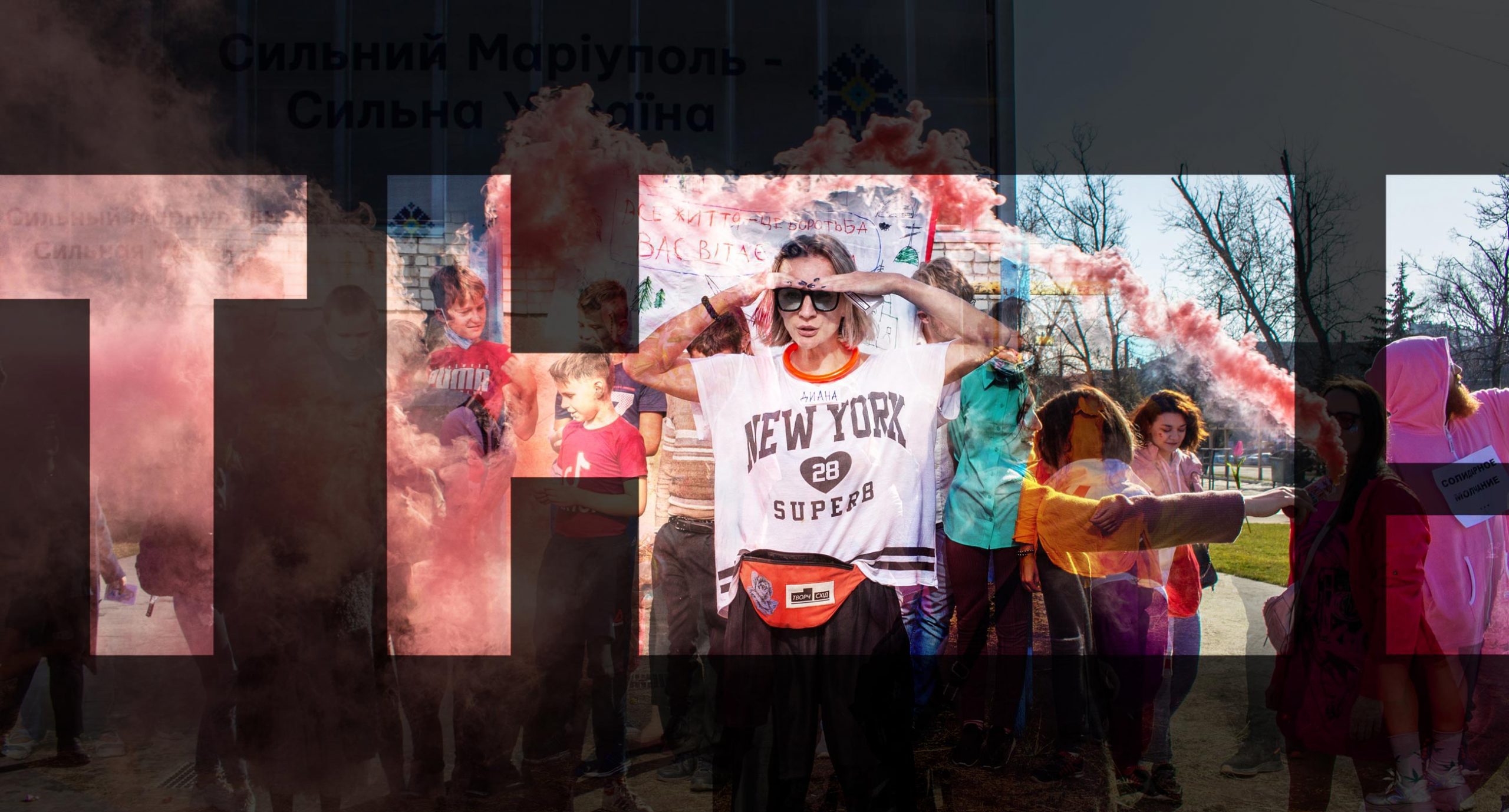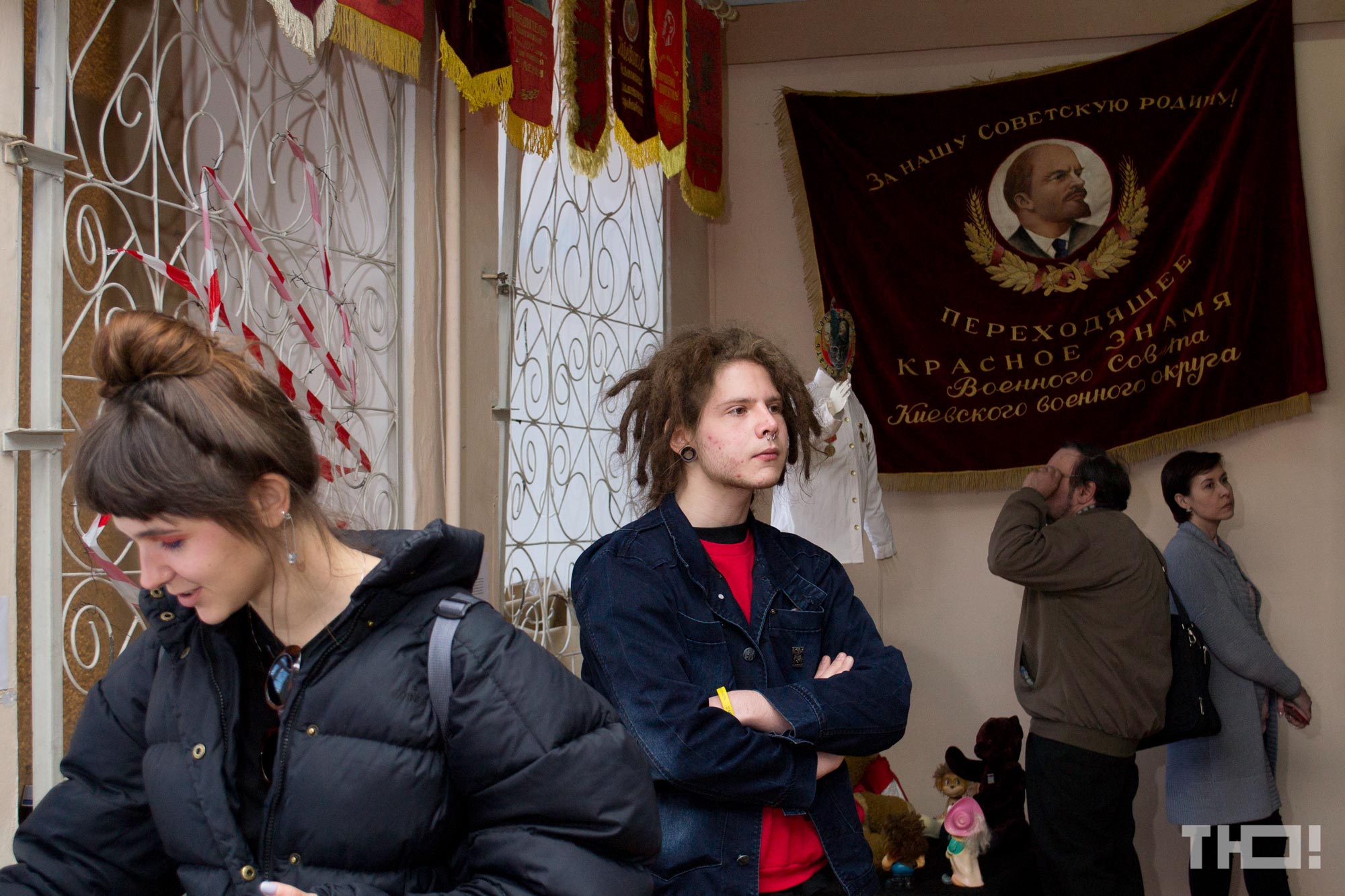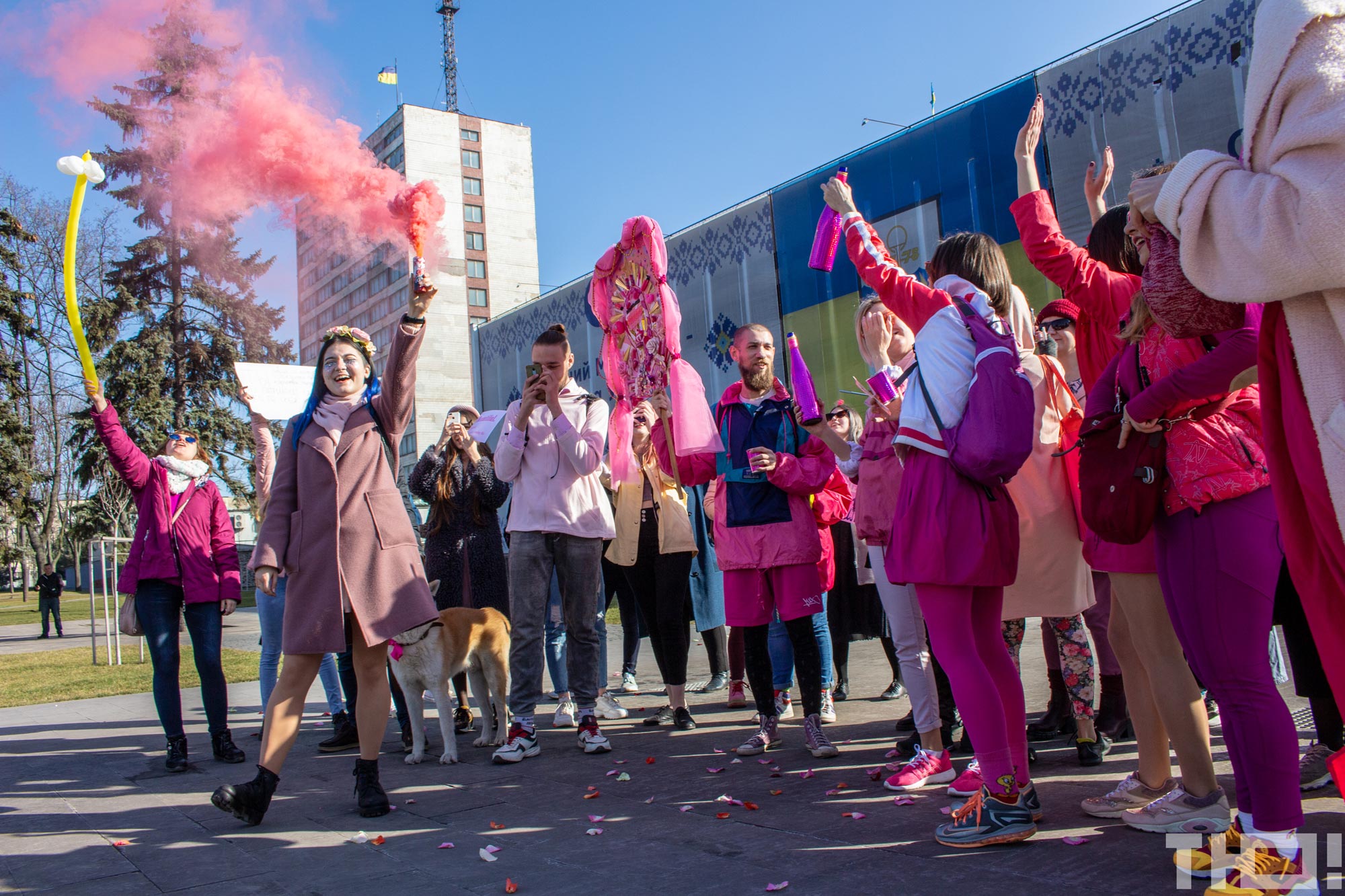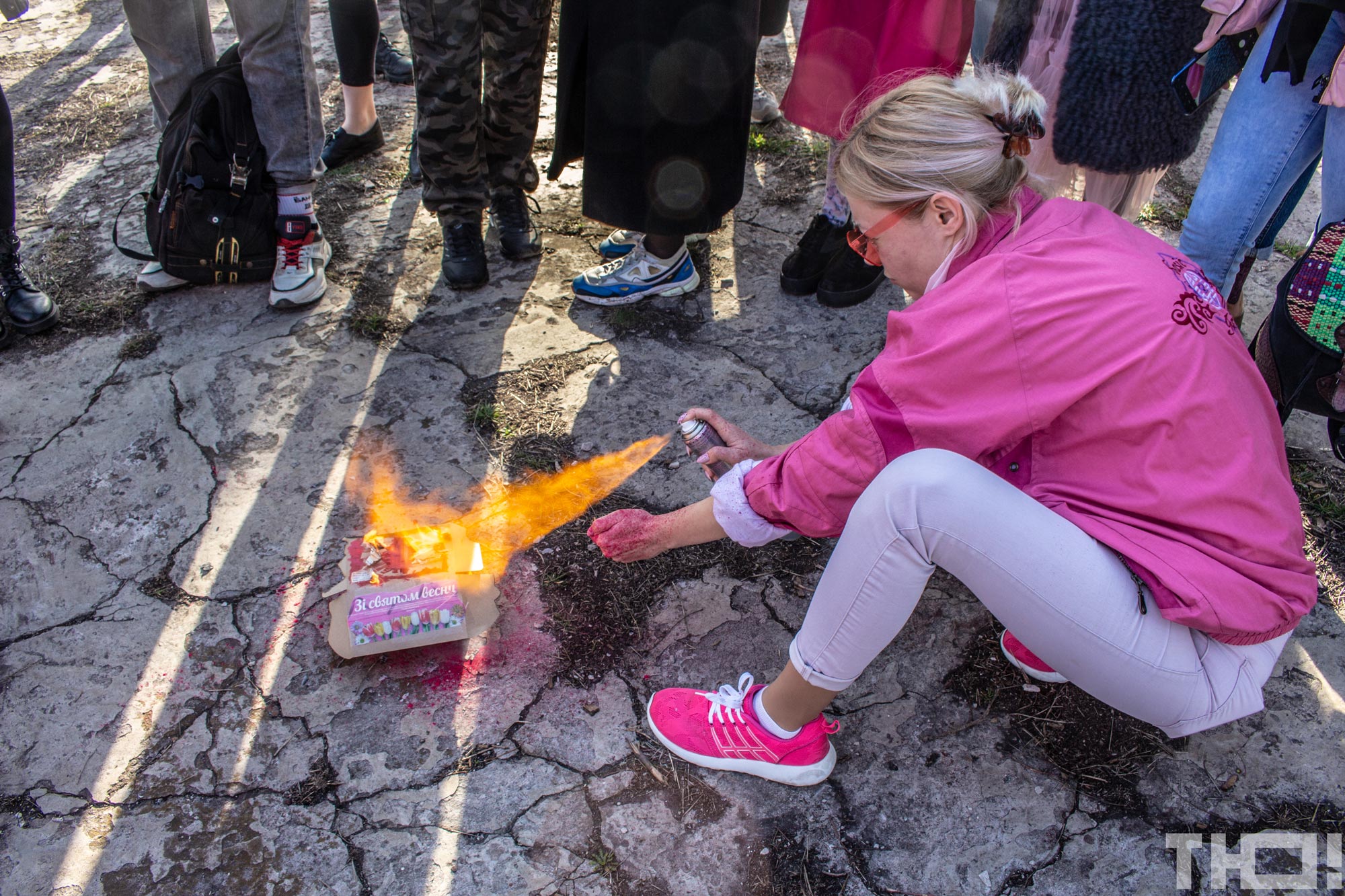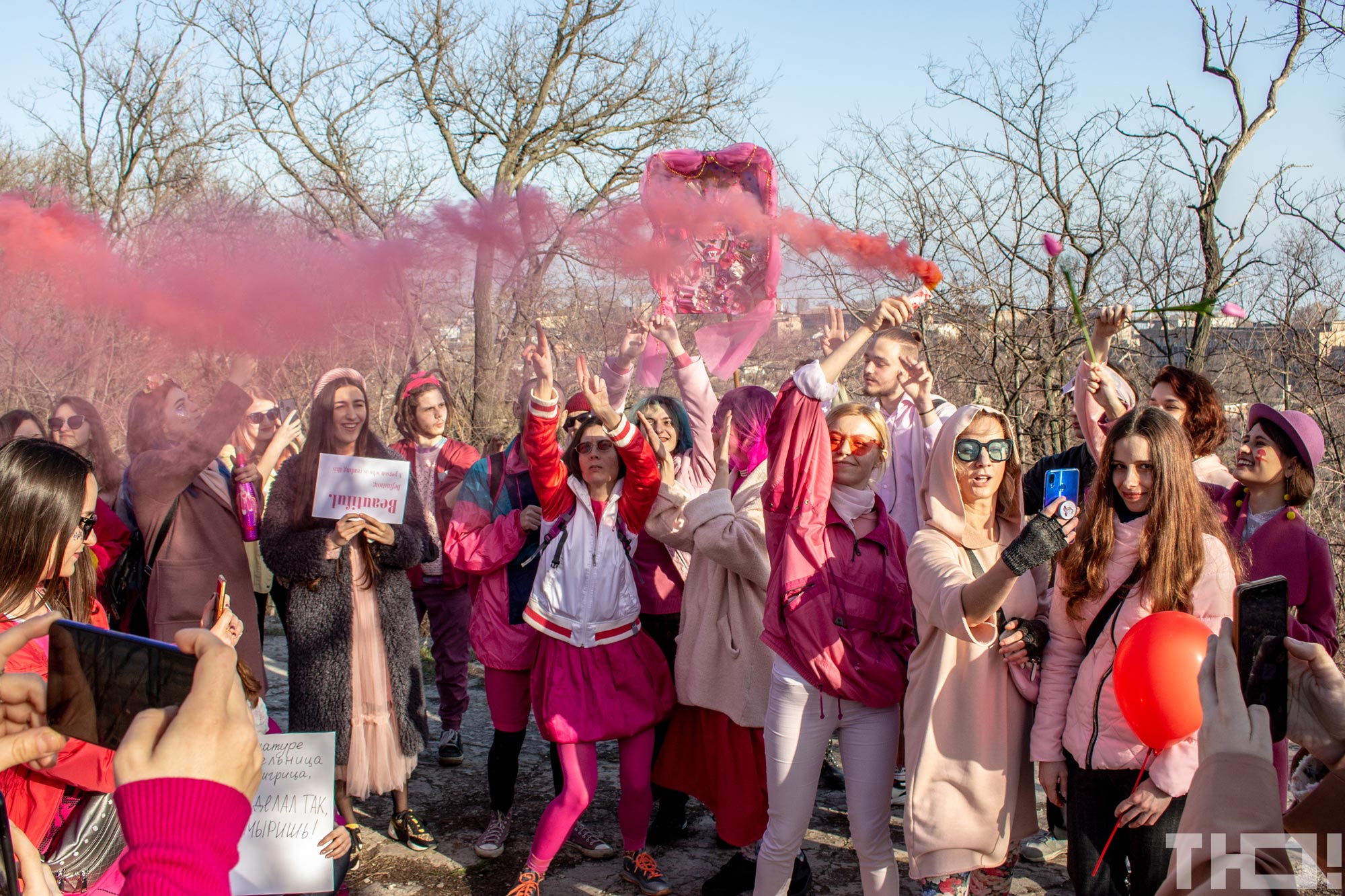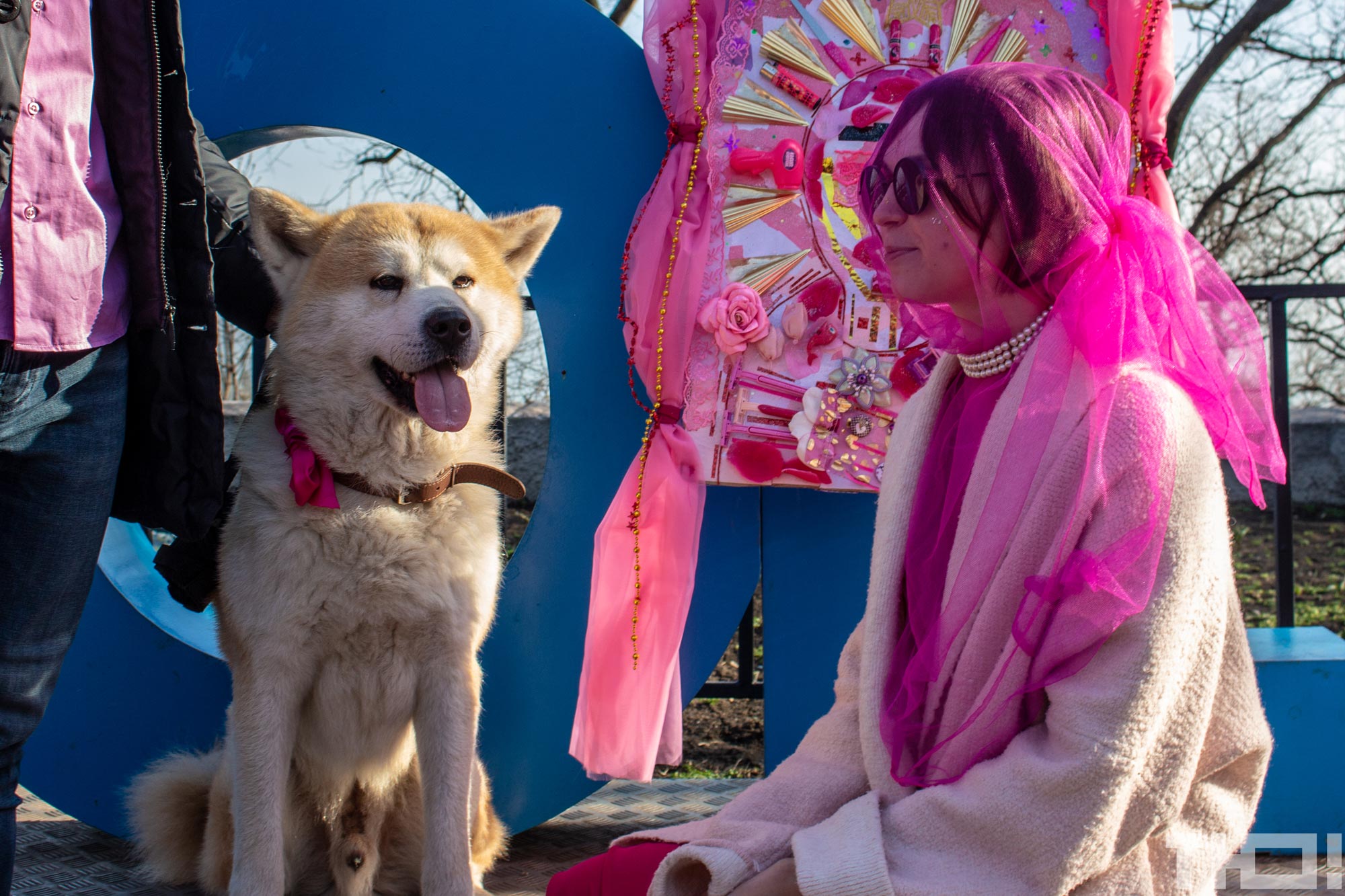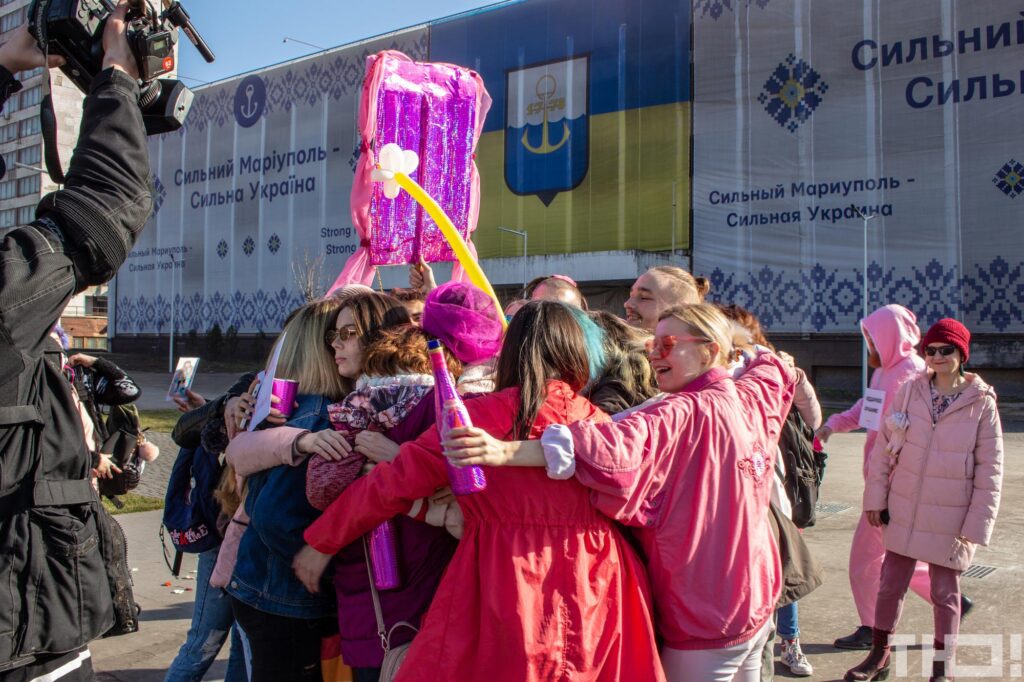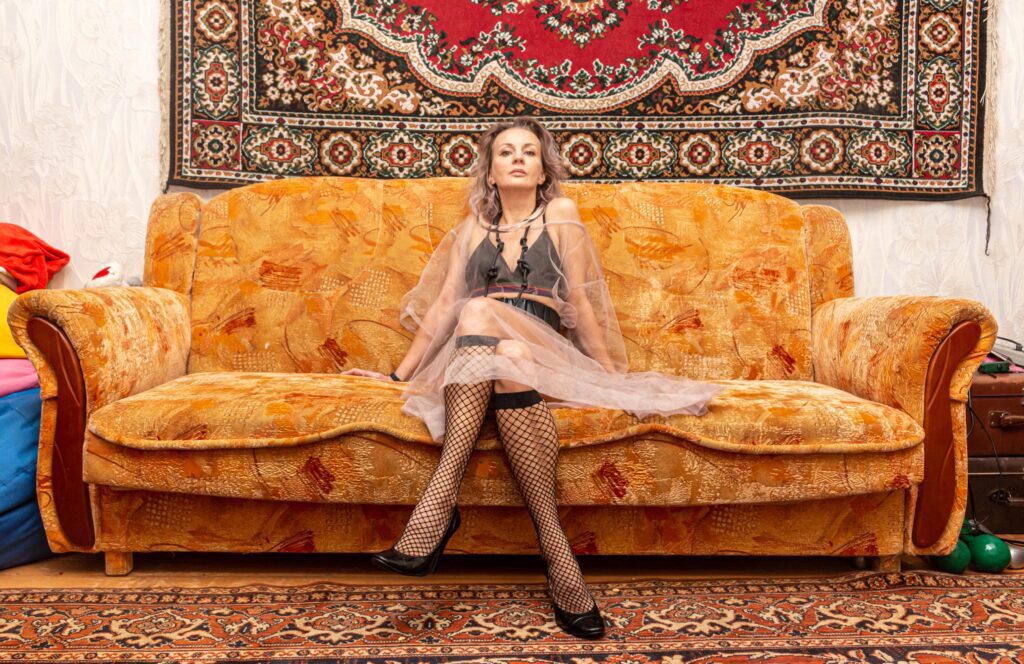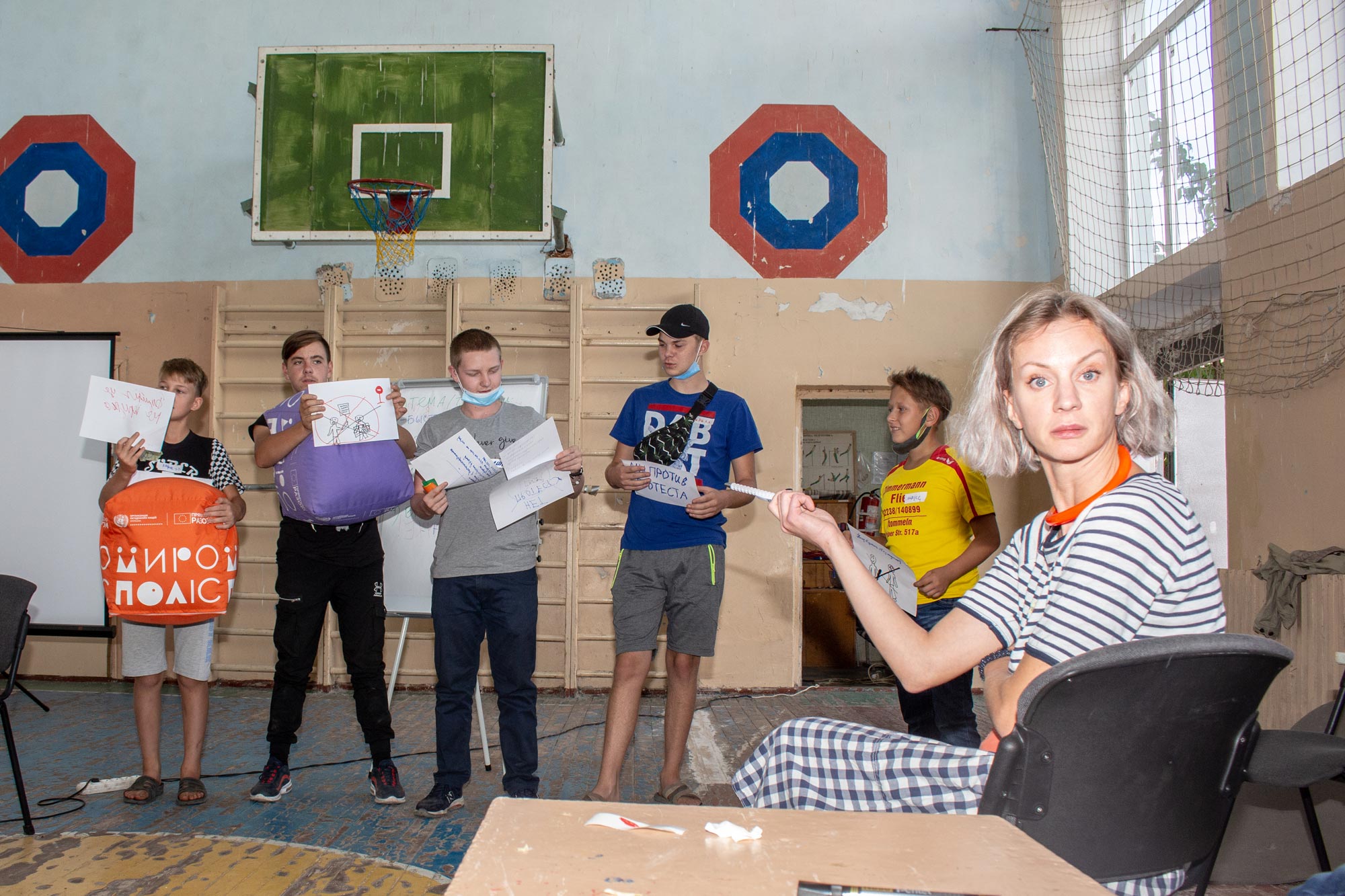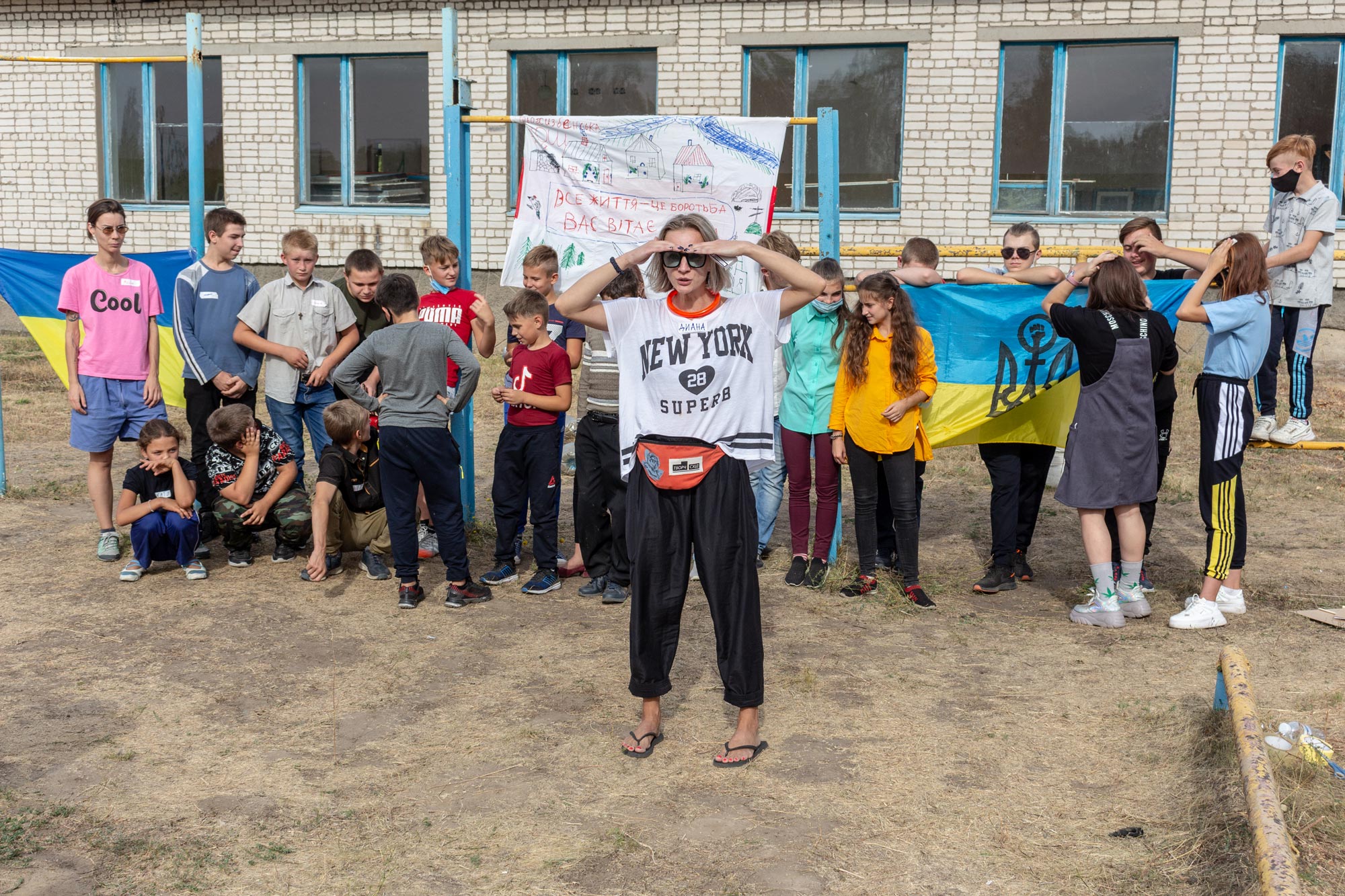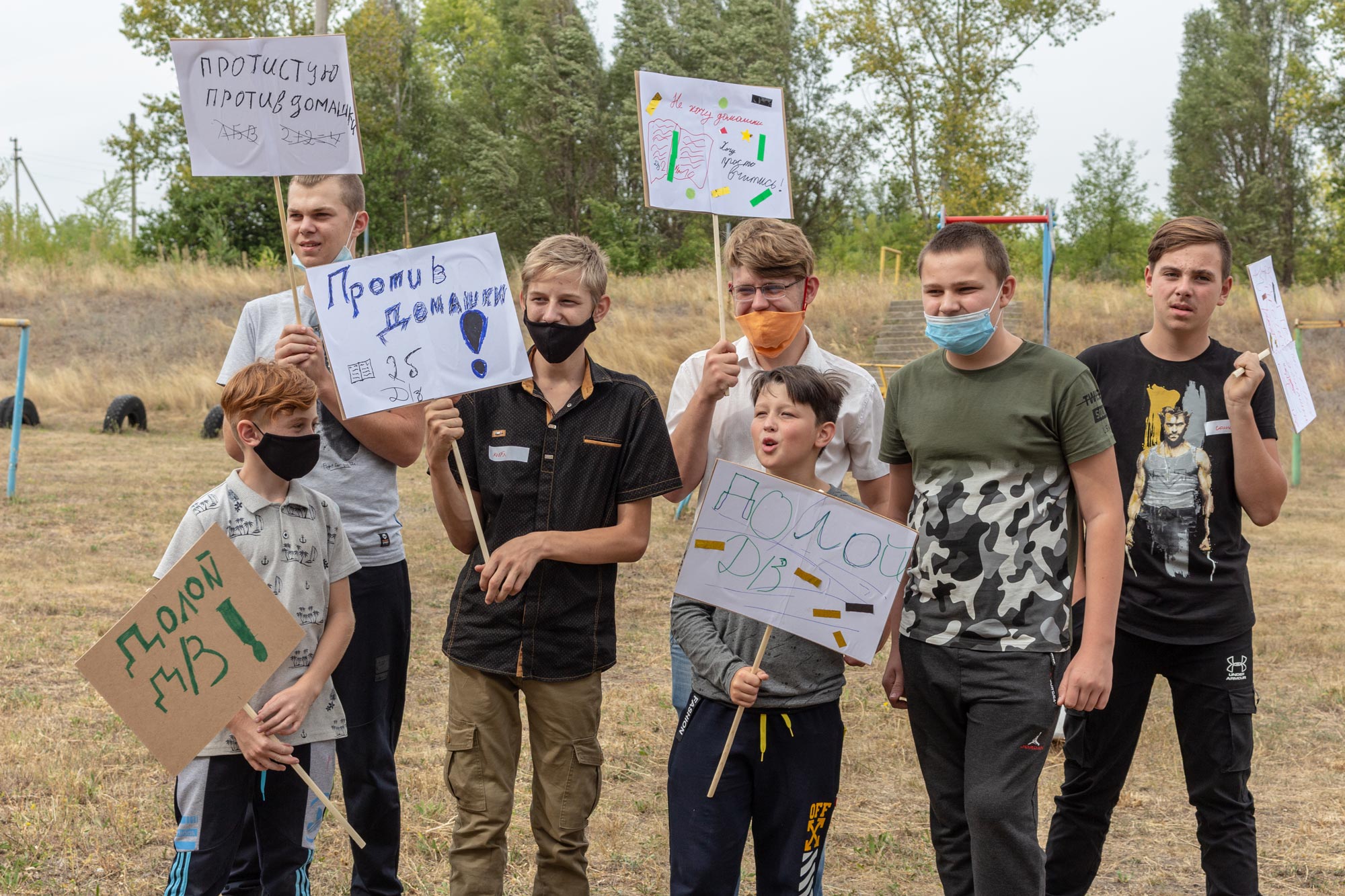Getting creative with protests is needed when traditional methods no longer work. This is what Diana Berg, who has been implementing cultural and human rights initiatives in Mariupol since 2014, is convinced of. In fact, the development of the city as a center of cultural life in the East began thanks to her and her creative projects. The TYU* platform, founded by Berg, has become a gathering place for activists and artists. Diana Berg told Zaborona journalist Alyona Vyshnytska about why she no longer wants to provoke audiences and how she turned from a passive woman into the main driver of creative protest.
*Editor’s note: TYU is a very Ukrainian expression, signifying surprise and/or a level of disapproval, commonly used when someone learns of an unpleasant fact.
Donetsk
Diana has always lived in Donetsk. She was born there, studied there, and worked there as a designer. According to her, she was an ordinary creative youth who did not care much about anything. She was not interested in politics, nor was she involved in any social movements or organizations.
Everything changed on March 1, 2014. A rally of pro-Russian forces gathered on Lenin Square in Donetsk. They shouted the slogans “Russia” and “Glory to the Berkut” and stormed the regional state administration. They lowered the Ukrainian flag from the flagpole and raised the Russian one. The protesters elected Pavlo Gubarev, a local businessman, as the new head of the region — he proclaimed himself the leader of the People’s Militia of Donbas.
“It had a huge impact on me. We can say that the activist Diana Berg was born then. That’s when I realized that my values are important and need to be loudly defended. My friends and I initiated protests in Donetsk, and it was so unusual for me. I quickly got hooked on the drug of activism. On March 5th, my then-girlfriend Katya and I organized the first rally – 3-4 thousand people came. On the 13th twice as many came,” says Diana.

Photo provided by Diana Berg
Diana and Katya became the drivers of the first big Donetsk rallies and brought in people who knew more about organizing protests. Someone suggested where to get the stage and equipment, advised on security, or where to obtain a megaphone.
“You need to plan carefully to pull off a protest. You need to know something about security, to be guided by the laws. We didn’t know all this – things happened, but somehow autonomously. Anyway, we left in a state of affect,” recalls the activist.
This, she adds, was pure political activism. They wanted to convey that Donetsk is Ukraine, and it was this call that people responded to. Diana organized political rallies throughout April. Some were large-scale marches, while others were small flash mobs. Each one, regardless of size, made it clear that Donetsk is Ukrainian territory, and people were ready to fight for it.
After the last march in April, Diane received death threats. People came to her house, and posters with her portrait and the caption “kill” were hung in Donetsk. Her mother persuaded her to leave the city for at least a week. Diana was against it, but eventually gave in to her mother’s wishes. Her mother took her to Odesa and returned to Donetsk. The activists’ parents, Diana says, were not touched. Diana stayed in Odesa for a few days, and after May 2nd, it became dangerous there as well. So she headed to Lviv, Kyiv, and then back again to Lviv.
“We were all waiting for it to be possible to return to Donetsk. But instead, after four months of traveling in Ukraine, we got as far as Mariupol. While living in Donetsk, I did not like it — I had visited a couple of times, but to go to sea, it is not necessary to visit the city. Ironically, I had to stay here — I chose it because it was much closer to home than everyone else. And to my relatives. And I wanted to join the pro-Ukrainian protest movement because it was too comfortable to watch everything in Lviv. “
It was something like an unfinished gestalt, says the activist. Donetsk had not been defended, but there was still a chance with Mariupol.
Mariupol
In 2014, there was no talk of art in Mariupol, says Diana. There were no cultural initiatives or spaces at all. The community united around an urgent problem: “The attack on Mariupol began, everyone rallied to prevent the enemy from passing through here. There was a need to do something right here and right now. And cultural projects are a long game, unlike before.”
The activist became a cultural manager by accident. She recalls that everyone was afraid to go to Mariupol back then — Russian forces were breathing down their necks. Everyone, she says, was afraid that the war would reach them. In a wave of fear, Diana was called by acquaintances from the Les Kurbas Theater in Lviv, who offered to come and stage a performance. To support and help Mariupol somehow. It all started with this. Diana helped organize several performances, and the audience gathered.
“It turned out that there is a need and demand for Ukrainian culture — not only to fight and volunteer. You also have to live,” she says. People went to Mariupol more often: Yuri Andrukhovych, Maryana Sadovska, writers, musicians. Everyone turned to Diana as a person who suddenly became the one who could organize everything.
There were more cultural projects, and at some point, Diana decided that everything was worth scaling. All you need for this is a “home’.
“I wanted to make room for everything weird. My main idea was to have a place where HZV [Hammerman Destroys Viruses] (a popular alternative band known for extravagant performances – ed.) or Human Likeness would come. But I did not have any vision or specific plan. I just wanted a cool, comfortable place for myself and others, an alternative to houses of culture. There were no informal cultural spaces — we had to make something out of nothing,” says Diana.

Photo provided by Diana Berg
Since 2016, the TYU platform has invited more than a hundred artists, musicians, and painters, as well as launched the city’s first art residencies — Zmist and Dekom — where participants had the opportunity to rethink Ukraine’s Soviet past. The platform is known for people who speak creatively on acute social issues: violence, homophobia, stigmatization of people with disabilities, environmental responsibility, and female objectification.
In 2019, TYU began to hold a series of workshops titled “Without borders, without fear, without money”, on how to creatively organize events. This year, the activists’ experiences have been assembled into the project “Activation: a culture of peaceful assembly.”
“We developed a training game and published a book on the freedom of peaceful assembly. It includes a lot of our own experiences concerning street activism, peaceful, creative protests, and protest movements – because that’s our identity,” says Diana.
If before the TYU platform was something made out of nothing, the activist adds, everything is different now. It provoked the emergence and development of other cultural movements in the city. New spaces and projects began to form, most of which were initiated by the City Council.
“The city is doing a lot, and it’s great. So now we are just an independent alternative. No longer nothing, because there is something. TYU is an art space for young people, free of charge, constantly open for creative development. The fact that it is always a combination of activism and culture does not change,” says Diana.

Photo provided by Diana Berg
Art in protest
After 2014, it became more difficult to draw attention to some problems. The traditional protest methods stopped working for activists. It is impossible to constantly stage protests.
“If you want to bring attention to an unpopular topic, you need to approach it creatively. It can be difficult to talk about gender inequality, gender-based violence, or the rights of LGBT people. We will not gather a march of women in Mariupol similar to the one in Kyiv. Human rights are a rather abstract thing. You have to be resourceful to get noticed. ”
For the first time, art was consciously integrated into the protest for the march on International Women’s Day, 8th March. There were only about ten participants but it was very lively and received a lot of attention. News of the event was spread by the local media, and, Diana says, it was discussed for a long time afterward.
“They went beyond the Istanbul Convention and staged a performance. We were in the image of women suffering from domestic violence, with bruises and blood. We walked around the city, handing out leaflets with information about the convention. They held placards with phrases like ‘But he says he loves me’, ‘But he’s still good,’ ‘But he promised to buy an iPhone,’ and so on. It worked. We got into the all-Ukrainian news and understood: even if we don’t gather a huge crowd in Mariupol, we will still attract an audience.”
This protest, according to Diana, confirmed that you can picket by yourself in a small town, and you will still be noticed, as long as you do it creatively: “We want people, regardless of where they live, to believe in their own strength. We even held a creative protest workshop in Trokhizbenka, a village on the demarcation line that is very difficult to reach. On the one hand, there is war and occupation, on the other — forest fires. The result of the workshop was a rap from local schoolchildren: “All life is a struggle, welcome to Trohizba.”
Creative protest, Diana says, is needed, and people need to believe that they can express their opinions and have the right to be heard. However, the activist herself plans to transform her approach to protesting by moving away from provocations. For example, at one of the marches, activists staged a so-called funeral of the patriarchate, dressed in black and scattering pink ashes.
“We provoked because there was a need. But last year we realized that we wanted to do something more unifying. Provocation works if you want to get noticed, and logically, not everyone reacts well to that sort of thing. It’s important to wake people up so they finally understand the importance of certain issues. But now there is a need for some dialogue and constructiveness, to do it thoughtfully. It is easy to provoke. To get people interested and involved — it is more difficult but more important,” the activist explains.
So, last year on March 8th, the activists staged a totally different kind of protest. It was an act of solidarity with everyone: “We renamed streets to female names, staged a march, and arranged a discussion between women from different towns and cities.”
Berg still holds onto a profession from her past life: design. However, it is now a tool for her own projects. Diana invented a name, logos and everything else that may be needed for TYU: “It’s just that my graphic design has been transformed into the design of projects and ideas. Scaled.”
She is reluctant to talk about the other Diana from before 2014. She says she loves and respects who she is today. There were times when she regretted not waking up earlier, not engaging in activism, that perhaps she could have changed something in the world sooner. But these days, she no longer guilts herself. It was necessary to go down this path to become the woman she is today.
“When I think back to life before 2014, I remember it being comfortable, calm. Sometimes I miss having a sense of balance when everything these days is so hectic. But it’s adult life — and I like it much more. ” Translated by Kate Tsurkan

